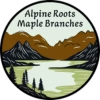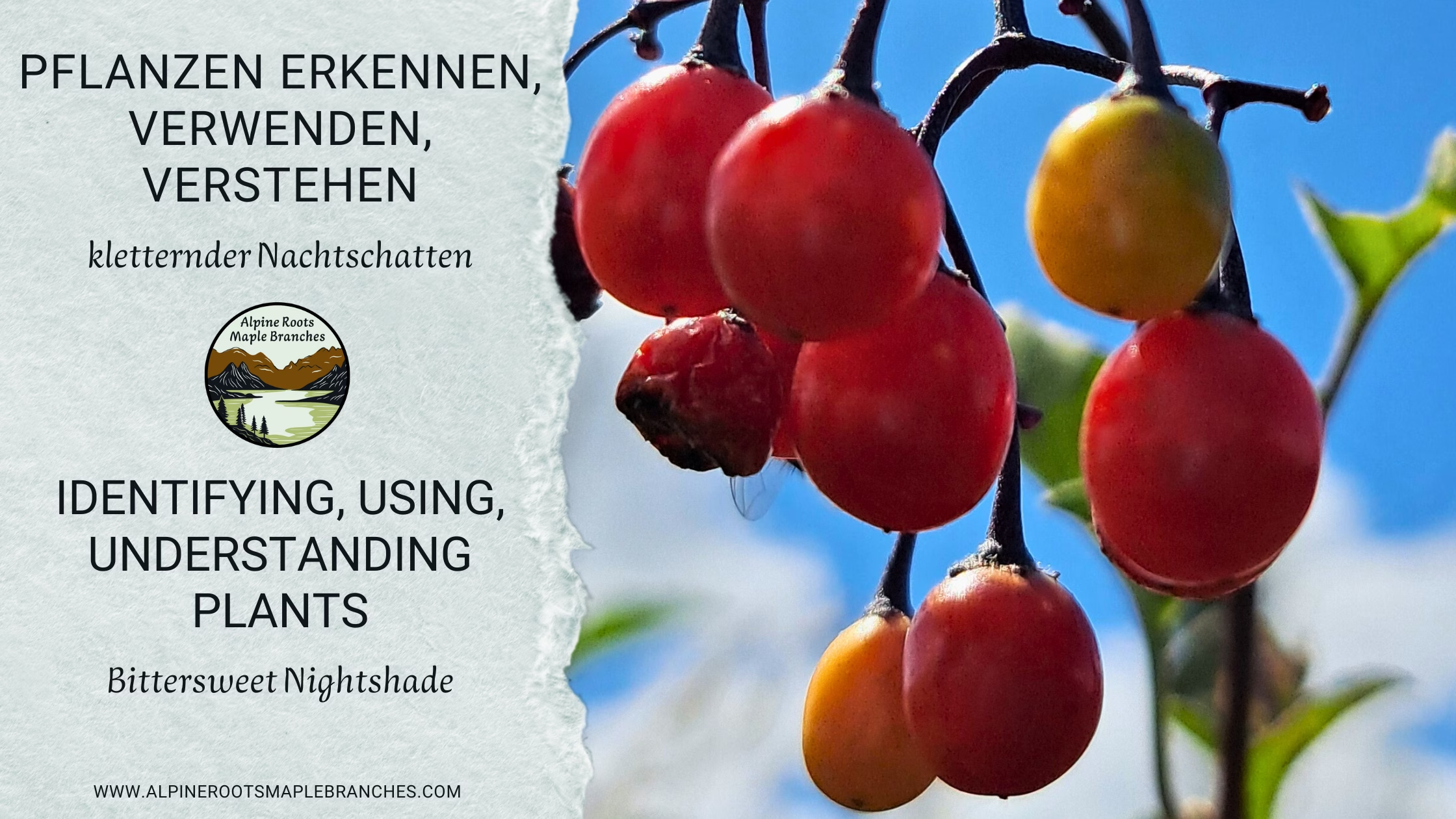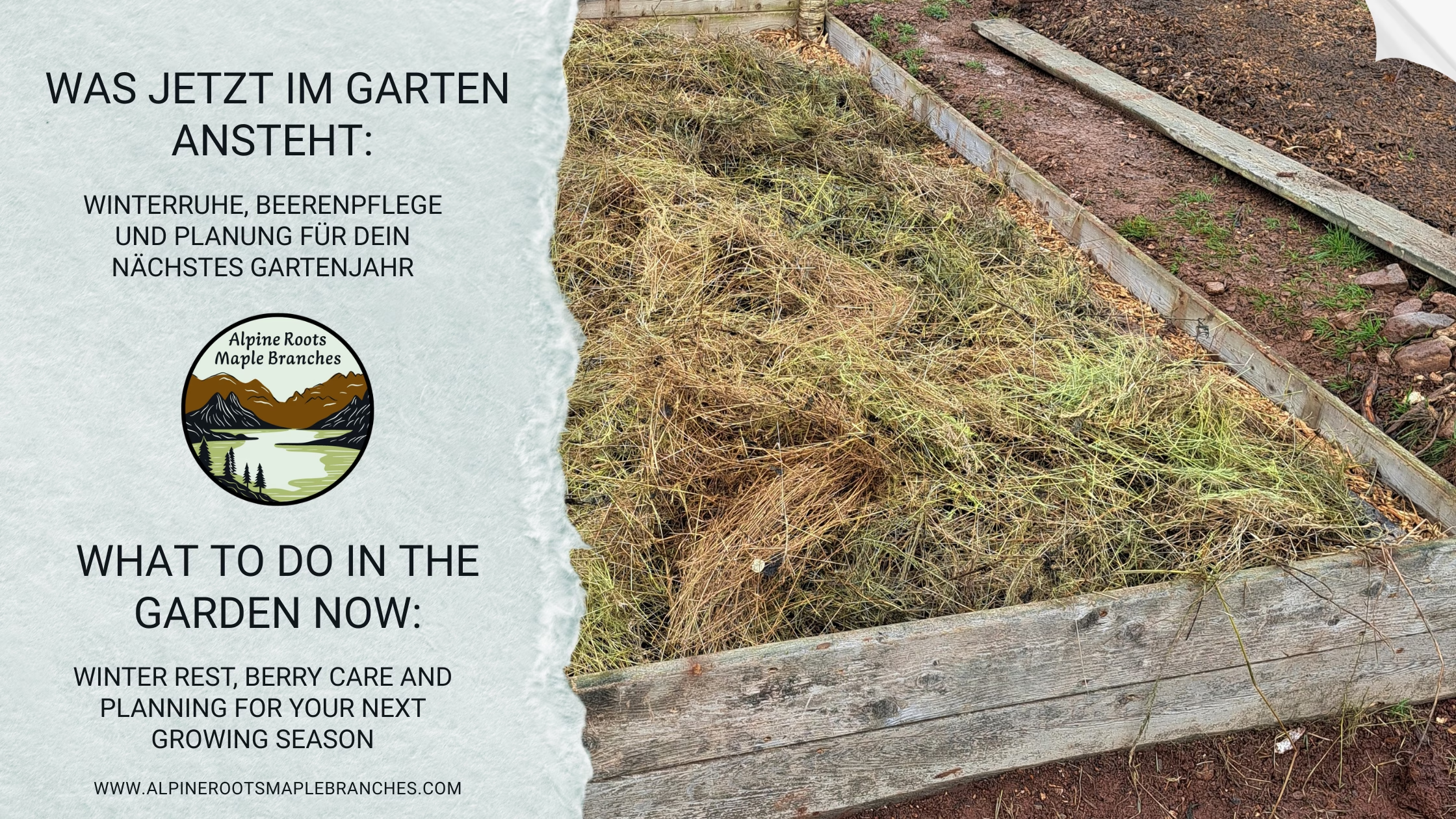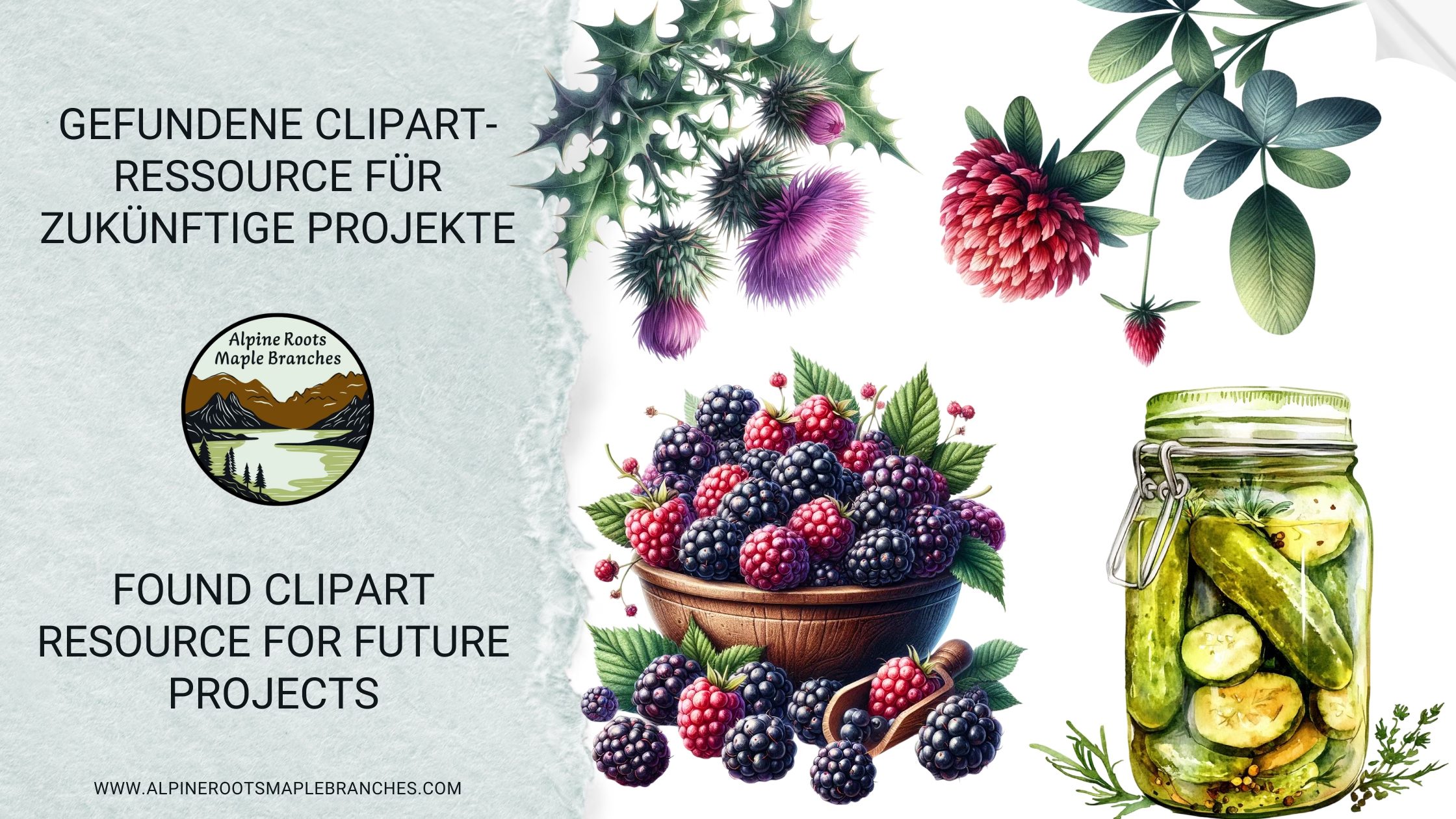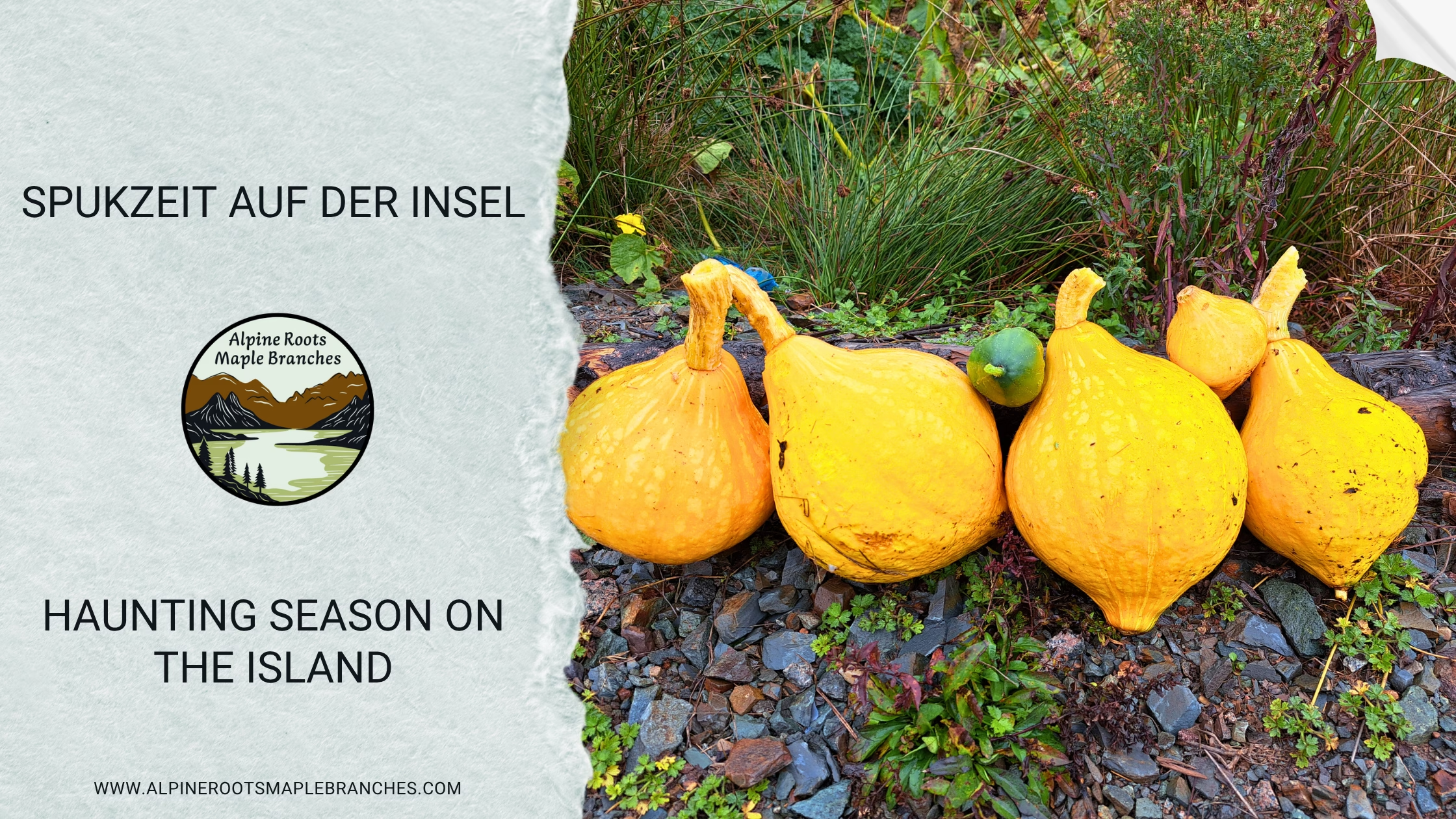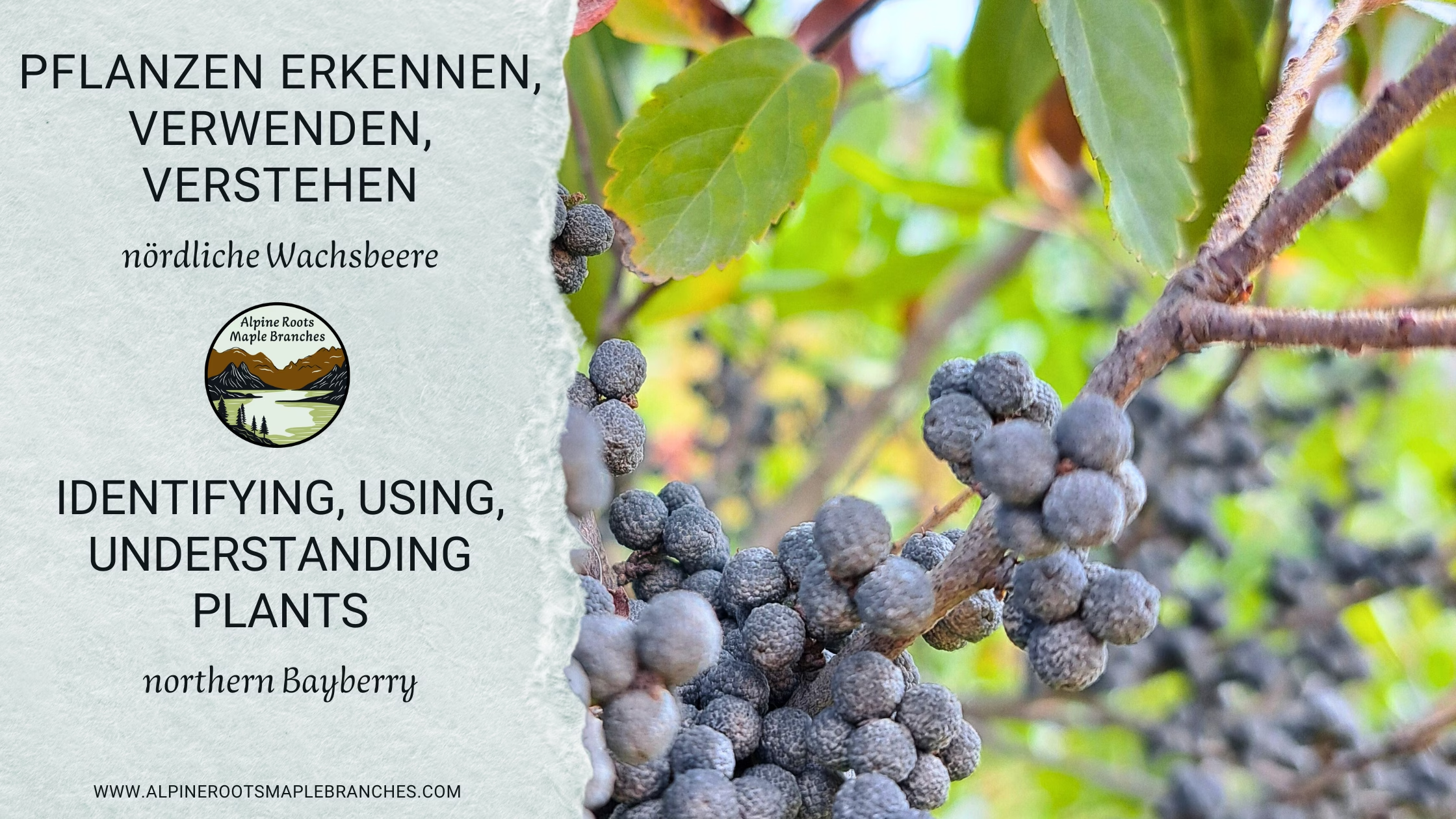Solanum dulcamara (Bittersweet Nightshade) is widespread in Canada and the United States and is considered a neophyte, a non-native species introduced by humans in more recent historical times.
!!! All parts of the plant are poisonous, with unripe berries being the most hazardous. !!!
At the same time, the species provides ecological functions as a pollen source, as structural/cover vegetation, and as food for some birds.
Our bottom line: manage case by case—remove where there is a risk of confusion or health concerns; tolerate where it remains controllable and offers ecological value.
For identification, toxicity, and look-alikes, see our species card.
Inhalt
Our discovery
We found Bittersweet Nightshade right in the tall grass—the purple-yellow flowers reminded us of borage.
When the first fruit set appeared, we initially mistook the plant for “Black nightshade” we knew from Austria. From the moment we realised we had a nightshade on the property, we were extra careful with visitors and closely monitored plants near our production beds so nothing would go wrong.
Once the bright red, elongated berries developed, it was clear: Bittersweet Nightshade.
To rule out any confusion, we removed plants around our berry beds—mainly raspberries, blackberries, and blueberries. In remote corners with no child or pet access, we keep small patches short so the ecological benefits remain without causing problems.
Ecological functions
Before we get into the practical management—choosing between removing or deliberately allowing and maintaining—it helps to understand what Bittersweet Nightshade can contribute and where its limits are. That makes site-specific decisions easier.
Pollen source via “buzz pollination”
The anthers open only at tiny pores. Bumblebees and some wild bees vibrate their flight muscles against the flower so that pollen dust “shakes out.” This is called buzz pollination. Bittersweet Nightshade can provide a reliable pollen source for weeks, especially when other resources are scarce.
Cover, micro-structure, and more habitat diversity
The scrambling habit creates hideouts and “travel routes” for insects and small fauna. In small, maintained patches, this can increase structural diversity in meadow areas: more edges, more microclimates, more places for beneficial insects.
Bird food and spread
Some birds eat the ripe red berries and disperse the seeds. That supplies food during fruiting—yet without upkeep, patches can expand. If you tolerate the plant, keep an eye on fruiting.
Pioneer and bridging function
On disturbed ground, Bittersweet Nightshade can provide temporary structure until target species establish. Ecological impacts are usually rated low to moderate, but effort rises if spread is curbed too late.
Practical guide: how we handle it
- Risk areas such as kitchen/you-pick garden, play zones, pet or livestock access: remove.
- Remote edges without access risk: tolerate within clear limits—keep patches small, untwine vines regularly, limit fruit set.
- Act before seed set: fewer ripe berries mean less spread later.
- Keep records: mark locations to track and control resprouting.
- Prevent confusion: in harvest areas for edible berries, remove as a rule.
Why work at or near water is especially regulated
Even though we found Bittersweet Nightshade away from water, it’s important to know that work near shorelines is sensitive.
Riparian plants protect waters. They slow and filter surface runoff. As a result, fewer soil particles and nutrients enter streams, lakes, ponds, or bays. Water stays clearer and supports richer communities.
Riparian roots stabilise banks. Roots hold soil and reduce erosion. Woody margins also provide shade, leaf litter, and large woody debris—vital for spawning sites, juvenile fish habitat, and migration corridors.
Because riparian zones do so much, interventions in Canada are often permit-based. Federal responsibility lies under the Fisheries Act. In Nova Scotia, the provincial rule sets Watercourse Alteration and the Wetland Conservation Policy on top. In practice, that means federal rules apply, and provincial rules may also apply—check both before you start.
Self-built ponds: does this apply too?
Often yes. In Nova Scotia, work on waterbodies generally falls under Watercourse Alteration—explicitly including ponds. Whether a man-made pond is also treated as a wetland depends on definition and location. If a pond connects to natural waters or supports fish, it may count as fish habitat and thus fall under the Fisheries Act. When in doubt, confirm first.
Safe control and removal
Effective action pairs strong methods with site protection. The goal is to reduce risk without causing avoidable side effects.
Mechanical
Pull young plants out with as much root as possible. Recheck the area over the following weeks to catch resprouts in time. Wear gloves. Untwine vines from young trees so they are not overgrown and remain vigorous.
Dispose of or burn plant waste
Do not compost fruiting material or vine fragments. Transport and dispose of it safely via household waste—or burn it, but only when permitted. To see if burning is allowed today, check BurnSafe Nova Scotia; the status is updated daily in the afternoon.
Protect the site
Mind erosion control, especially on slopes. Near shorelines and wetlands, additional requirements apply—see the guidance and links in the water section above.
Native alternatives with similar function
If you remove Bittersweet Nightshade, ecological gaps often appear. It pays to fill them right away with native species—for cover and structure, for pollen and nectar, and for fruiting wildlife plants:
- Virginia creeper — Parthenocissus quinquefolia (also called wild grape vine/jungfernrebe): climbs, provides bird food and robust structure; suitable for stabilising slopes where appropriate.
- Red-osier dogwood — Cornus sericea (also called silky dogwood/seidiger Hartriegel): dense shrub with high wildlife value; proven for riparian planting and erosion control.
- Winterberry holly — Ilex verticillata (also called winterberry/winterbeere): shrub with valuable winter fruit for birds; widespread in Nova Scotia.
Conclusion
Bittersweet Nightshade remains a poisonous plant, yet it also fills ecological niche functions. The right decision is always site-specific:
– remove where confusion risks exist (kitchen/you-pick garden, play areas, animal access) or where sensitive zones are involved,
– tolerate under clear limits where small patches stay manageable and provide benefits.
A practical routine helps: mark finds, inspect two to three times per season, limit fruiting, and dispose or—if permitted—burn plant waste (check current permissions via BurnSafe Nova Scotia). Clarify permitting before any work at or in water. When unsure, cross-check with the species card—and as a rule, do not taste unknown berries.
If patches expand despite care, replant the area with native alternatives. That keeps functions in the system without introducing new risks.
